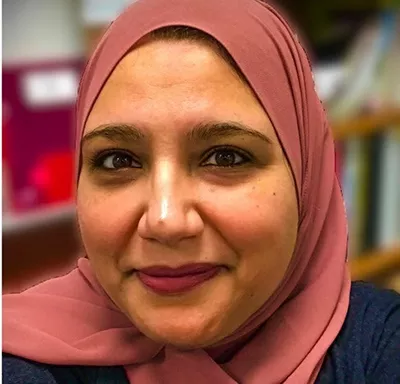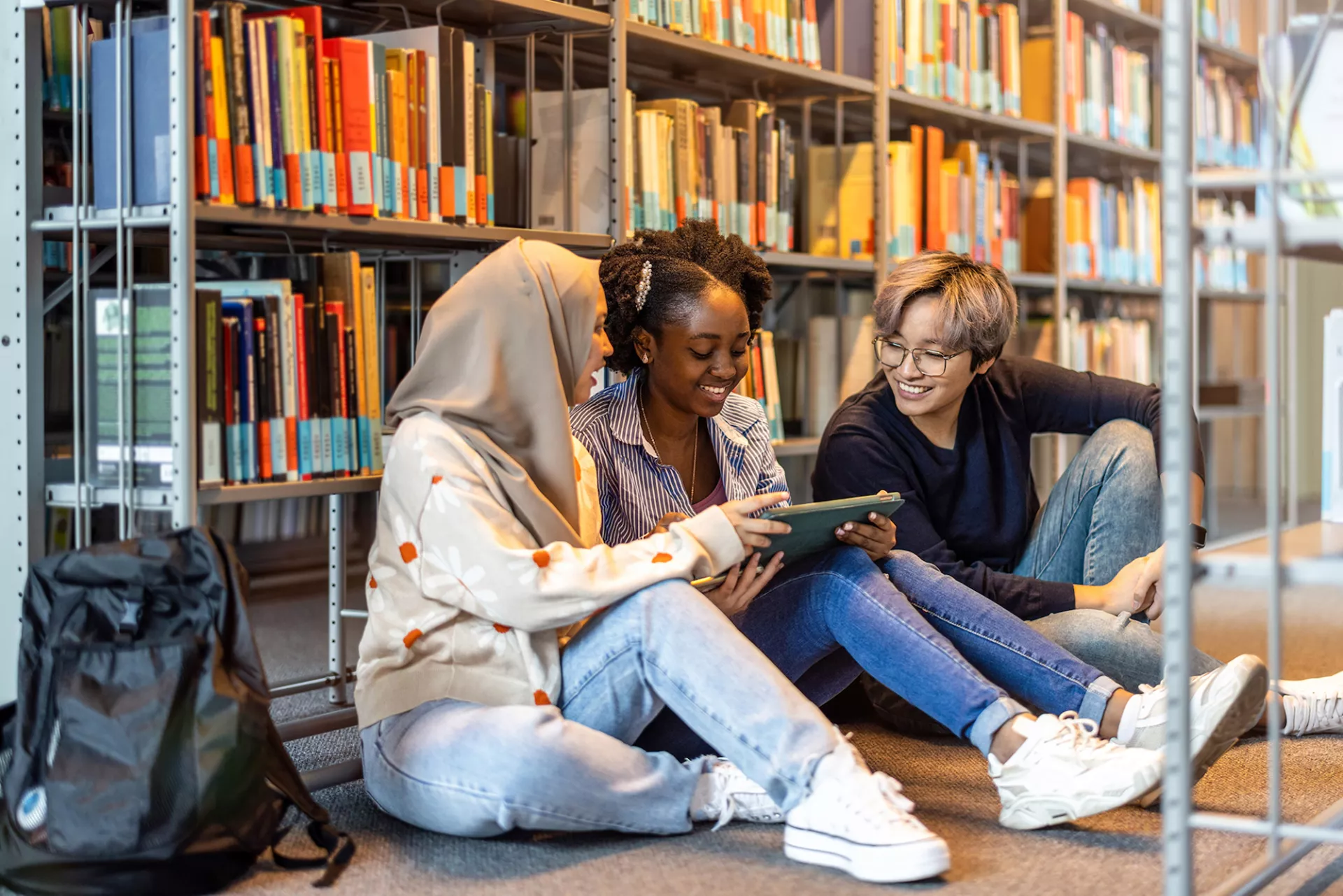Key Takeaways
- Genuine and caring relationships with students help build their confidence and give them ownership of their education.
- These powerful connections allow for all students to feel safe in their learning environment and comfortable enough to be their authentic selves.
Most people believe that children of all races, backgrounds, and genders should have the freedom to learn and be themselves. But that’s not always the case—as certain politicians try to divide communities by what they look like. And so, representation matters for students who look for cultural diversity and for educators who look like them.
Wafa’ Safi, now a science teacher at Fall Creek Junior High School, in Fisher, Ind. and an equity coach, is that educator.
A shared experience
At Safi’s previous school, she had a sense that she might have a shared experience with a student. They were both Muslim Americans, and she believed the girl also was very conscious of what it means to wear a hijab, the headscarf that identifies them, and, sadly, too often stirs xenophobic or racist attitudes.

Safi has faced that response ever since she was 15. That’s when she began wearing a hijab despite her Palestinian parents’ concerns (with a bit of an intervention) and a dispiriting response from others she would meet in her school and community in rural Kentucky.
“I really felt it was important to be unapologetic about who I was. But after I began wearing it—and for my whole life—I knew that because of the headscarf and my heritage, others believed I did not belong. I felt that every second of the day,” she says.
The student, a freshman at Hamilton Southeastern High School, where Safi was teaching at the time, had instead refused to wear the headscarf because she worried about a response from others that Safi endured. But as she got to know Safi and talked to her about her experience, she changed her mind.
“She told me that she had watched me and said I gave her the courage to be who she was, and she began proudly wearing a hijab,” says Safi. “I was so pleased. It made me happy that a student saw that she could be herself and thrive as I had modeled.”
A calling with challenges
Safi believes that ignorance and fear grows from misunderstanding, and today is fueled by the Gulf Wars, from the 1990s, and a slice of nationalism and xenophobia fed by leaders who benefit from stoking hostility. She says former President Trump’s Muslim ban and political dialogue during his presidency and now during his campaign to be reelected has also brewed suspicion—and unwarranted concerns about anyone who is different.
She recalls cruel treatment throughout school, facing insults and even physical attacks. But she is most aware of the steady, disheartening feeling of being judged unfairly due to implicit bias, including by a high school guidance counselor who once told her: “You really shouldn’t worry about college. Your people don’t educate women.”
Safi persisted and studied to be a doctor, but always felt she’d like to teach, to a large degree because of one biology teacher who bolstered her pride and tapped into her drive to learn while many educators failed her. She thought she could be like that biology teacher.
“I love learning and wanted to help students gain that appreciation of education and science the way I had,” she says,” but I also wanted to inspire students who might be different in some way. It is important for every young person to know there is a place for them.”
She found, however, that unfair treatment often continued, even in education.
“It took me forever to get a job in a school,” she says. “And in the jobs that I’ve held, it seemed like there were always subtle things,” that at times left her feeling isolated.
One principal eventually hired her after passing her over several times. A few years later he told her: “You were the most qualified and the best candidate. I just didn’t know what you would bring to the school.”
“It was mainly my hijab that made him nervous and what kind of influence it may have on the students,” Safi explains. “It struck me as strange that he would even think that—I teach science.”
Safi first taught at a school in Arizona, where diversity in the neighboring community seemed to make the fact that she was different less important. But when she moved to Indiana, she felt the subtle exclusion—bolstered, she believes, by a political atmosphere that stirs racism and xenophobia and gives some permission to say and act on those feelings rather than be open minded about others who are different than them.
She points out, however, that much of the time, especially as they got to know her, coworkers were open minded and supportive of her.
When students see themselves
There is a large population of Arab Americans and Palestinians in the region where she lives, which borders Indianapolis.
To support them, she founded the Muslin Students Club, which is populated by many non-Muslim students who appreciate Safi and the work the group does to raise awareness around culture. She also serves as an equity coach and trainer in her region and at national venues for NEA. Both students and colleagues seek her out on issues of injustice.
Quote byWafa' Safi
Safi can tick off one story after another about students she believes she’s impacted positively as a Palestinian and Muslim, as a woman in science, and someone who stood out because they were different but was nonetheless proud and determined.
“When my Palestinian students see that I embrace my identity unapologetically, it gives them courage,” she says. “I do my best to model for them what pride in oneself looks like so they do not walk around being apologetic for who they are.”
She says she encourages students to learn the history of their culture and their “family story,” which gives them the confidence to “fully embrace who they are with pride.”
“I had one student tell me: ‘Ms. Safi, I love talking to you. You know what I mean without having to explain myself because you get it. I know you understand me.’ Having the opportunity to be with someone who gets you without having to explain is everything to a student who is trying to find their way through a world that tells them they are wrong or different.”
Students have sought her out for advice or informal counseling about college and careers in science—encouraged by seeing that she has found a position she loves and was able to pursue it despite obstacles.
“What I try to show staff and students as a teacher and equity coach—and I can’t emphasize this enough—is that we are, as human beings, regardless of our faith, more alike than we are different,” she says. “All religions have the essential message of love and kindness and goodness to others, and treating others the way you want to be treated. I think that is a theme in all faiths. I wish people would look past the differences and know that we are more alike than we are different.”

